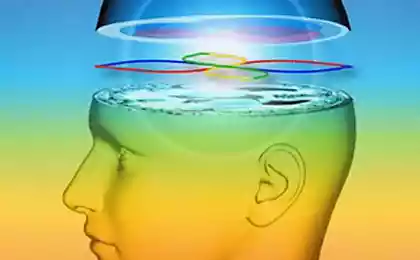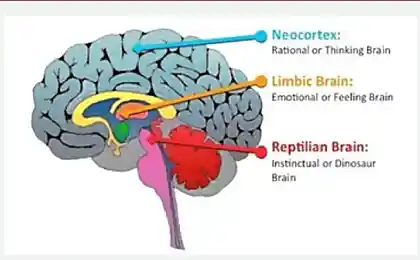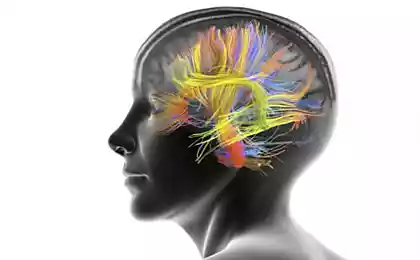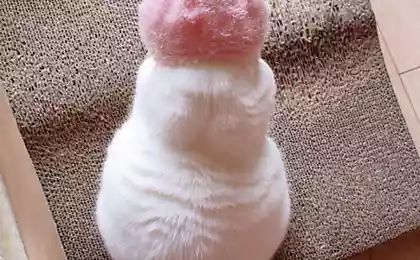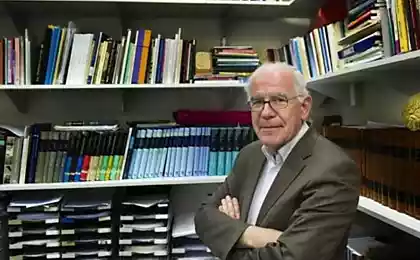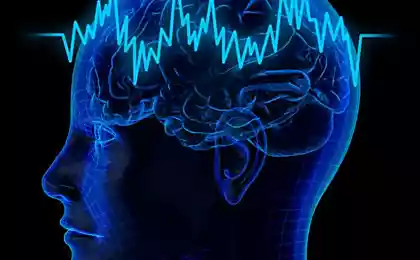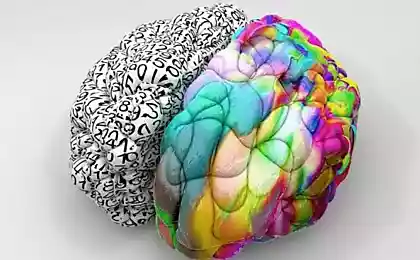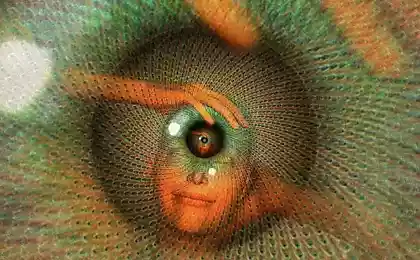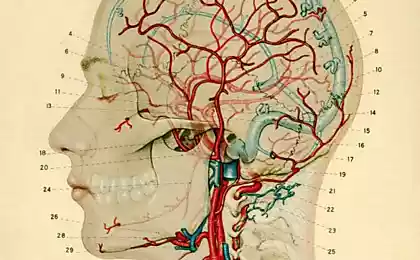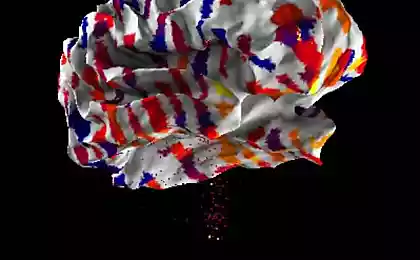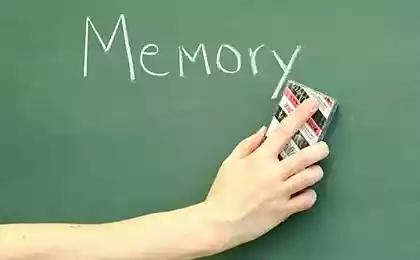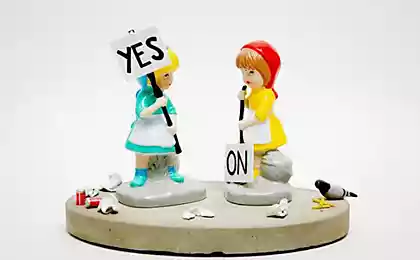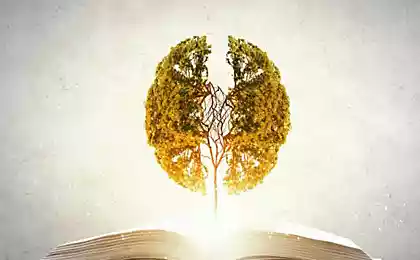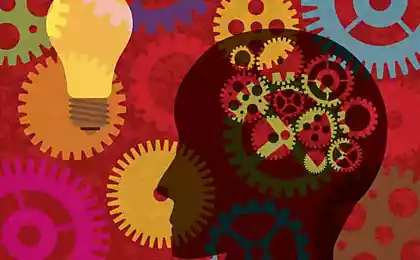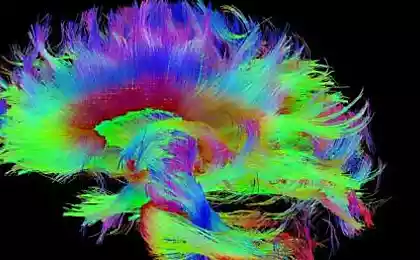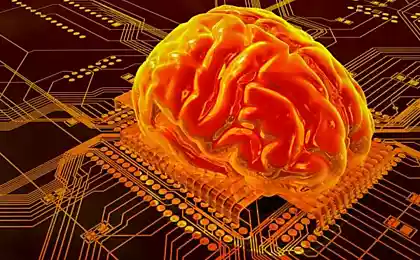1185
Aesthetics and refinement of the human brain in the art of Greg Dunn
A look at other uglom
brain called the most complex structure in the universe. But it can also be the most beautiful. Works Greg Dunn convey aesthetics and sophistication of the most mysterious human organa.1. Cortical kolonny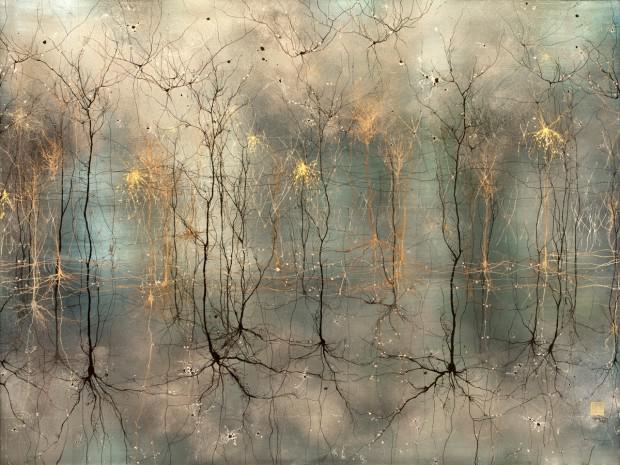
Dunne's early work, consisting of a very minimalist compositions. For inspiration, he used an image from the microscope, but painted all the neurons themselves. "The branching of neurons is almost Zen, I was very interested in the initial stage", - said on.2. Shopping and piramidy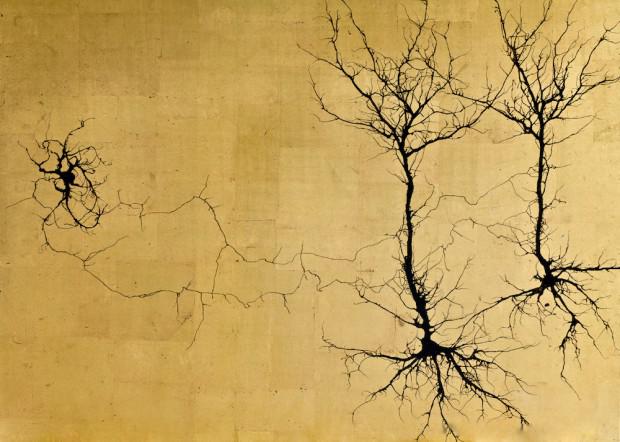
Dunn developed a process comprising spraying the ink on a non-absorbent paper. Form paper and air turbulence cause ink rasplёskivatsya so that they fully transmit neyronov.3 arborescent bundles. Golden cortex II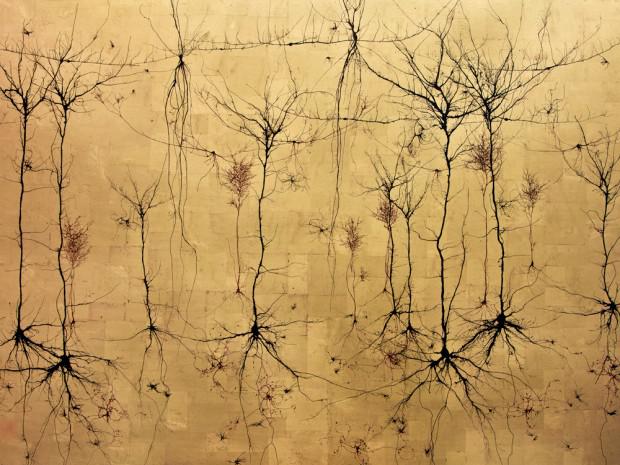
There is a certain degree of randomness in the sample of neurons, which is difficult to convey by drawing them. "When you try to manually draw the neurons you follow very different rules of the subconscious," - said Dann.V contrast, the method of spraying the ink is somewhat similar to the Italian cooking: you just takes the best ingredients, and learn to manage imi.4. Cortical circuit board (micro-etching gold on steel)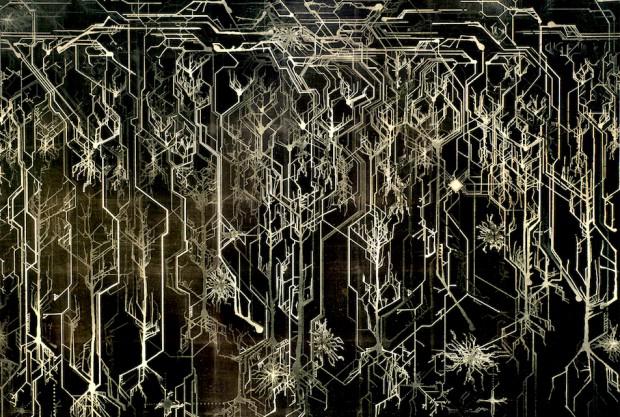
Newer work Dunne created using the above technique mikrogravyury. Such prints it creates, together with his colleague Brian Edwards. Please Dunn draws all neurons manually. Then he places the image into a computer and processes it with special tools. Then Dunn Edwards and create a high resolution image, consisting of hatched liniy.5. Electron micrograph mikrogravyury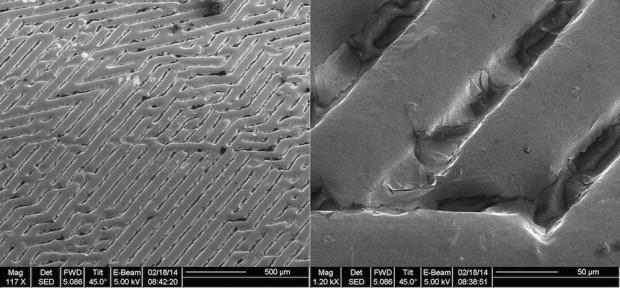
Next Dunn Edwards and print images on metal using a technique called photolithography. First, they print an image on a transparent sheet which is then placed on a photosensitive material coated with steel. Where there is ink on a sheet, the light can not pass. Then they shine on the metal UV lamp. And there is a steel engraving. Then applied to the surface zoloto.6. Rainbow hippocampal blyuze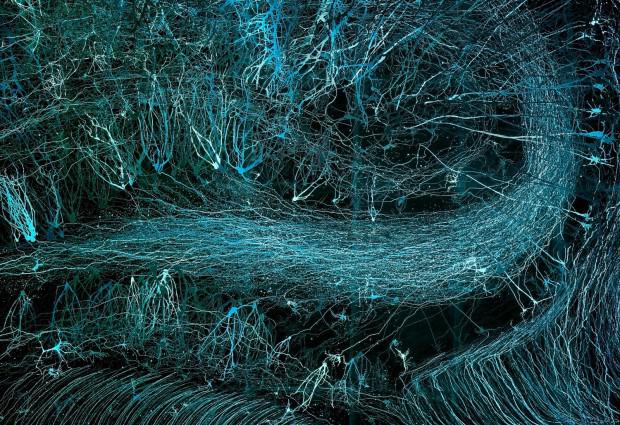
Dunn and Edwards set the lights and special showcases around their prints to add different colors. By controlling the angle of incidence of light, they can control the color in some parts of the image. The inspiration for this image came from a process Brainbow (Eng. Brain - brain, rainbow - a rainbow) is a method used for painting the neurobiology of neurons using fluorescent stained belkov.7. Rainbow the hippocampus: variatsii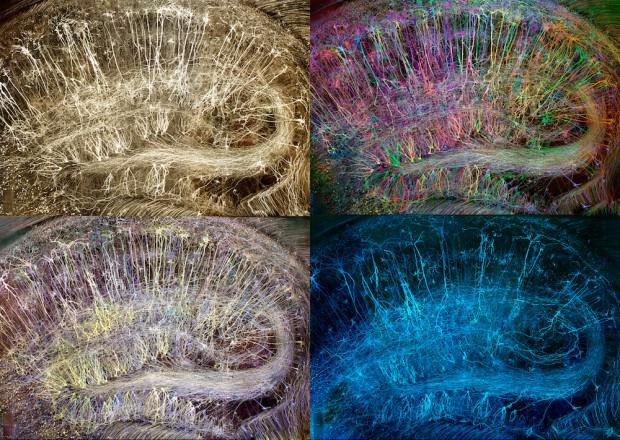
There rainbow hippocampus demonstrated under various lighting. "You can get an infinite number of options, because the surface itself [image] colorless" - said Dann.8. Glial tissue and blood sosudy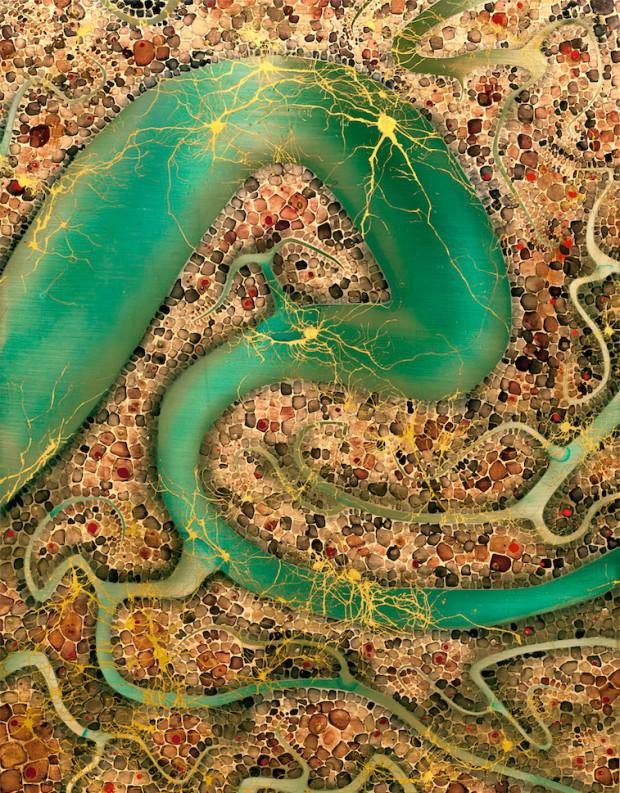
Most of the work is focused on Dunn neurons, but some are found in other types of tissues, such as glia. This neuronal brain cells without that support the neurons and protect them. They play a very important role in mozgu.9. Glial tissue: vspyshka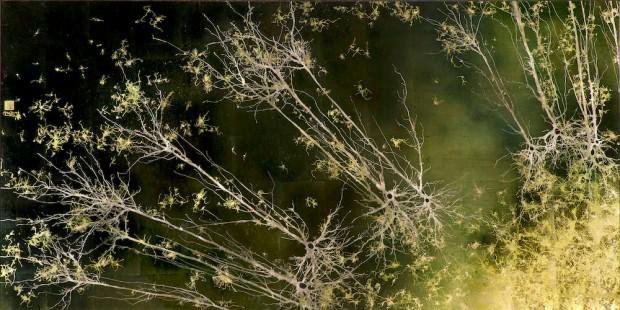
Another image of glial tkani.10. Spinal mozg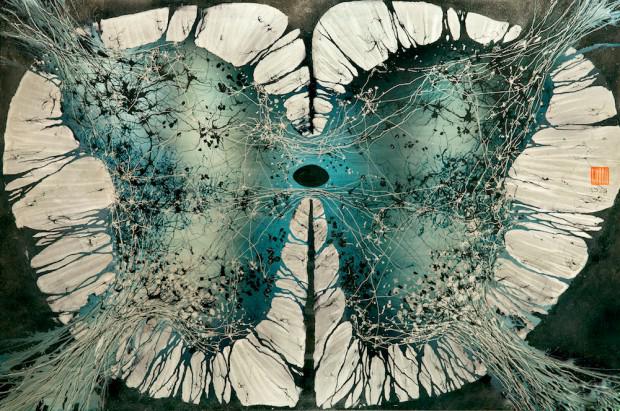
One of the most attractive works of Dunn there are no brain, but there is a small piece of the spinal cord. With the help of their art Dunn hopes to draw attention to the scientists, whose work is usually not appreciated by the general public. "Art can capture people's emotions and thrill that can not afford charts and diagrams».
via factroom.ru

brain called the most complex structure in the universe. But it can also be the most beautiful. Works Greg Dunn convey aesthetics and sophistication of the most mysterious human organa.1. Cortical kolonny

Dunne's early work, consisting of a very minimalist compositions. For inspiration, he used an image from the microscope, but painted all the neurons themselves. "The branching of neurons is almost Zen, I was very interested in the initial stage", - said on.2. Shopping and piramidy

Dunn developed a process comprising spraying the ink on a non-absorbent paper. Form paper and air turbulence cause ink rasplёskivatsya so that they fully transmit neyronov.3 arborescent bundles. Golden cortex II

There is a certain degree of randomness in the sample of neurons, which is difficult to convey by drawing them. "When you try to manually draw the neurons you follow very different rules of the subconscious," - said Dann.V contrast, the method of spraying the ink is somewhat similar to the Italian cooking: you just takes the best ingredients, and learn to manage imi.4. Cortical circuit board (micro-etching gold on steel)

Newer work Dunne created using the above technique mikrogravyury. Such prints it creates, together with his colleague Brian Edwards. Please Dunn draws all neurons manually. Then he places the image into a computer and processes it with special tools. Then Dunn Edwards and create a high resolution image, consisting of hatched liniy.5. Electron micrograph mikrogravyury

Next Dunn Edwards and print images on metal using a technique called photolithography. First, they print an image on a transparent sheet which is then placed on a photosensitive material coated with steel. Where there is ink on a sheet, the light can not pass. Then they shine on the metal UV lamp. And there is a steel engraving. Then applied to the surface zoloto.6. Rainbow hippocampal blyuze

Dunn and Edwards set the lights and special showcases around their prints to add different colors. By controlling the angle of incidence of light, they can control the color in some parts of the image. The inspiration for this image came from a process Brainbow (Eng. Brain - brain, rainbow - a rainbow) is a method used for painting the neurobiology of neurons using fluorescent stained belkov.7. Rainbow the hippocampus: variatsii

There rainbow hippocampus demonstrated under various lighting. "You can get an infinite number of options, because the surface itself [image] colorless" - said Dann.8. Glial tissue and blood sosudy

Most of the work is focused on Dunn neurons, but some are found in other types of tissues, such as glia. This neuronal brain cells without that support the neurons and protect them. They play a very important role in mozgu.9. Glial tissue: vspyshka

Another image of glial tkani.10. Spinal mozg

One of the most attractive works of Dunn there are no brain, but there is a small piece of the spinal cord. With the help of their art Dunn hopes to draw attention to the scientists, whose work is usually not appreciated by the general public. "Art can capture people's emotions and thrill that can not afford charts and diagrams».
via factroom.ru
10 mysteries of the world, that science is finally revealed
Guide: How to enter the room and immediately make a good impression

